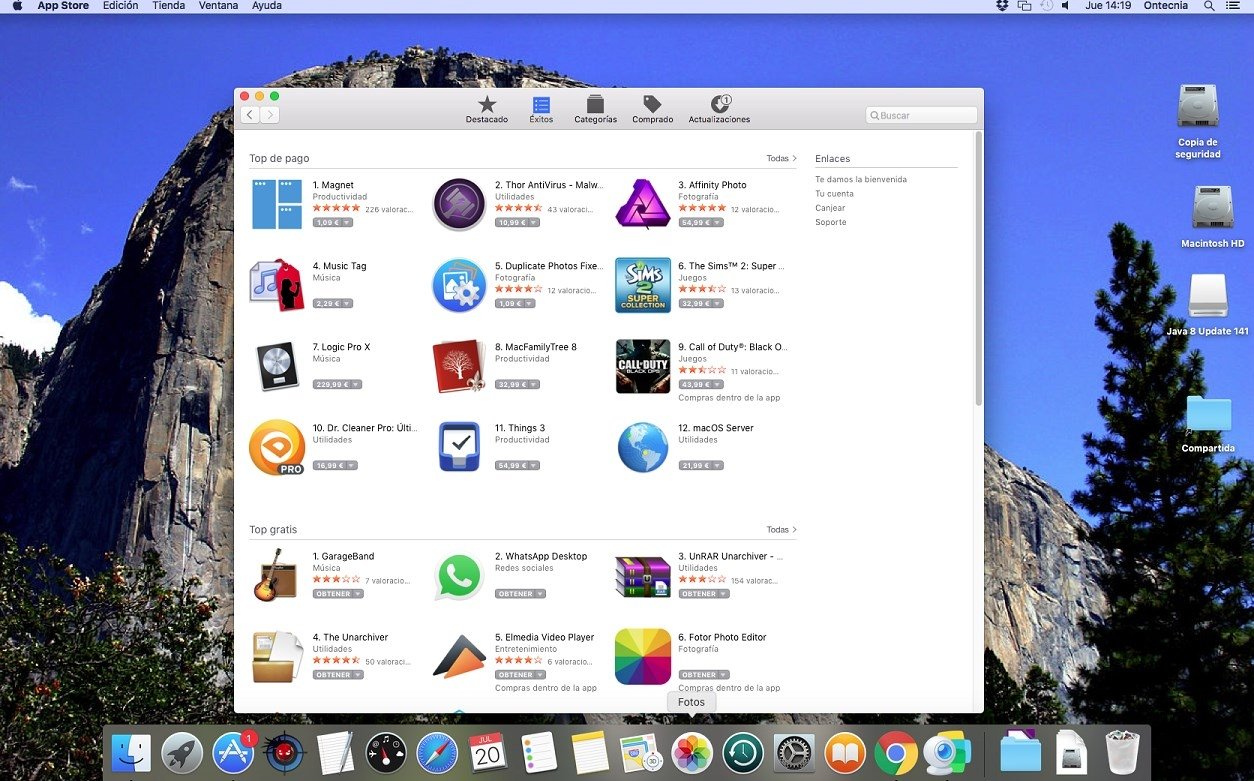Garageband Mac Ancienne Version
Posted By admin On 11.04.20
Though GarageBand is an exclusive for Apple platforms, it’s really ubiquitous within this bitten world. With the same iCloud, you can use GarageBand on your iPhone, iPad, and Mac. All of these devices (if relatively new) provide enough performance and almost no latency as you play in real time. Dec 12, 2019 The new GarageBand is a whole music creation studio right inside your Mac - complete with keyboard, synths, orchestral and percussion instruments, presets for guitar and voice, an entirely redesigned sound library, and virtual session drummers. A beautiful and intuitive interface makes it easy to learn, play, record, and create great-sounding. GarageBand was updated to version 10.0.3 on October 16, 2014. This version included myriad bug fixes and several new features including a dedicated Bass Amp Designer, the introduction of global track effects and dynamic track resizing. Apple released GarageBand 10.2 on June 5, 2017. The latest version is GarageBand 10.3.4, released on December 11, 2019. Features Audio recording. GarageBand is a. Use Drummer Loops in GarageBand for Mac. Quickly add drums to your song using Drummer Loops, a type of Apple Loop that you can customize to fit your song. Work with percussionists in GarageBand for Mac. Use Drummer to add dynamic percussion parts to your song, available in three percussion styles—Latin, Pop, or Songwriter.
Apple is seemingly prepping a new version of Logic Pro X for the Mac with support for Live Loops. The feature has proven to be popular in Garageband for iPad, and now Apple is looking to expand the experience to Logic Pro users.
Garageband Mac Ancienne Version Download
As first noted by a user on Reddit (via MacRumors), Apple’s education website shows an image of a MacBook Pro running Logic Pro X. What’s interesting about the image, however, is the Logic Pro X interface that’s shown. As eager Reddit users noted, the screenshot appears to show Apple’s Live Loops feature in Logic Pro X for the Mac.
Garageband Mac Ancienne Version Youtube
The Live Loops feature first came to the iPad back in 2016, with Apple billing it as an “entirely new and intuitive way to create amazing music.” Live Loops includes a variety of Apple-designed loop templates for creating music with a unique cell and column-based design.
Here’s how Apple describes the feature in Garageband on iPad:
Differences in iphone and ipad djay 2. Live Loops is designed to make it easy to create music like a DJ or electronic music producer. With Live Loops, you can play, edit, and arrange musical ideas in real time. Each musical phrase or loop exists in a cell in the Live Loops grid. Working in the grid, you can start and stop playback of cells freely, while keeping everything in sync. You can choose a Live Loops template which includes a set of instruments and prerecorded cells, or choose an empty grid.
There’s no indication on when Apple plans to release the next version of Logic Pro X. As of right now, it has not taken down the image from its education website.
In related news, Apple last week extended the Final Cut Pro X free trial from 30 days to 90 days. The company also added a new free trial option for Logic Pro X, allowing users to try out the application for 90 days.

Are you a Logic Pro X user? What do you think of Live Loops coming to the Mac? Let us know down in the comments!
FTC: We use income earning auto affiliate links.More.
But if so could somebody describe in general terms what functionality is missing in the cut-down version of Garageband that runs on iPhone/iPad versus the full version that runs on a Mac ?
I just got some books on Garageband (I think they're geared to the Mac version) and wanted to see if it was worth learning it for mobile sketching purposes.
And I was wondering before wasting time with the books how much of the stuff covered in them would simply not be applicable to the limited version that works on the iPhone/iPad. It might be very frustrating if I read about some function in the book only to find its been cut out of the iPhone/iPad. (I do not own a Mac). Exactly how much difference is there and how crippled is the cut-down version ?
Thanks,
Bob